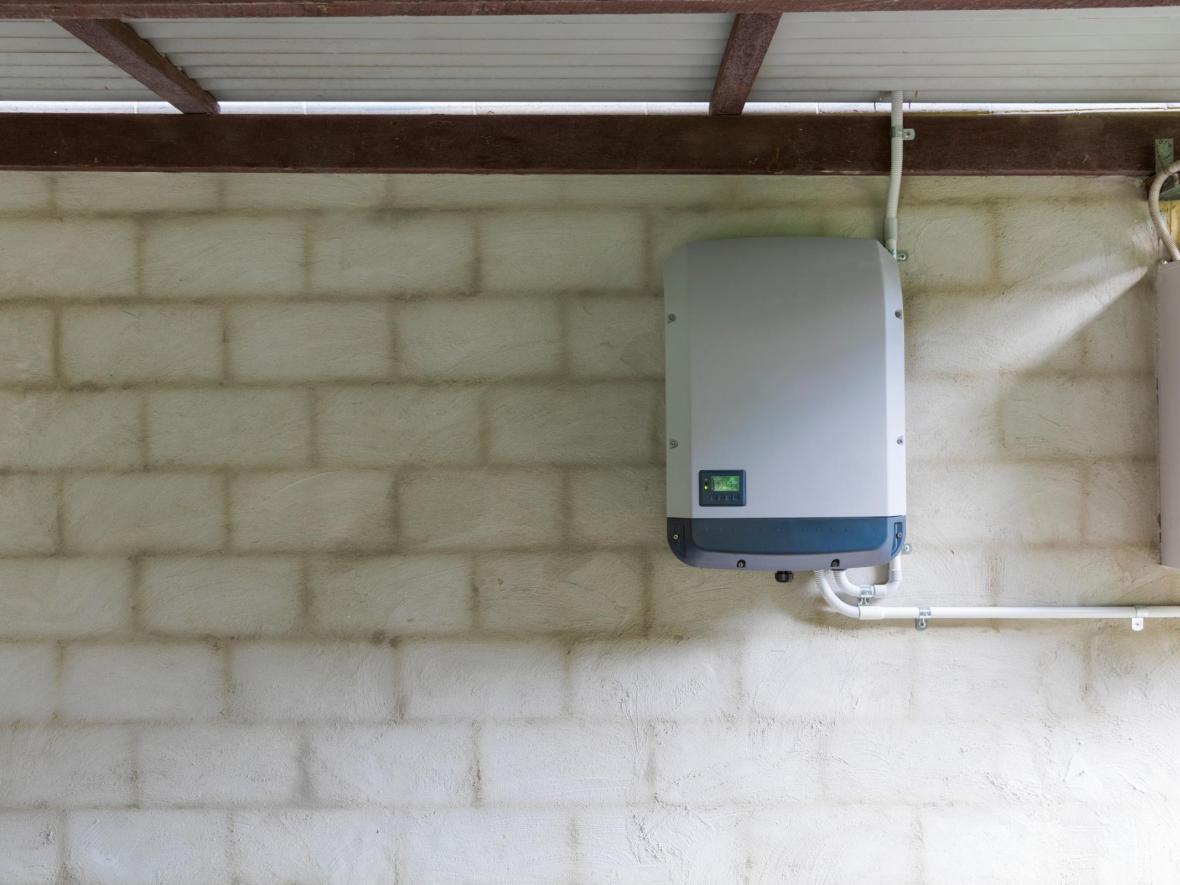
Confused about all the solar inverter options and what they do?
Energy Solution Providers has the answers.
More and more homeowners throughout Arizona are making the transition to solar power as they realize that a PV (photovoltaic) panel system can lower monthly energy costs and reduce a home’s carbon footprint. But even as solar becomes increasingly popular, many people aren’t familiar with the components of a solar energy system beyond solar panels installed on their roof.
One of the most important components of an effective solar power system is the solar inverter – the piece that converts the energy generated by solar panels into a usable form of electricity that can power your home or business.
What Do Solar Inverters Do?
Solar panels produce direct current (DC) electricity. Most appliances and electronic devices, however, use alternating current (AC) power. So, the energy solar panels generate needs to be converted from DC to AC before it can be used to power a home or business. That’s where solar inverters come in.
Converting energy from a variable direct current to a usable alternating current is not the only thing that inverters do, though. Inverters are also helpful in monitoring how much power the panels they’re connected to are generating.
What Are the Different Kinds of Inverters?
Inverters are generally categorized into three groups: string inverters, microinverters, and hybrids.
String inverters connect multiple panels in a series (or “string”) to one centralized inverter which converts the DC energy from all of the solar panels into usable, appliance-friendly AC power. String inverters are the most commonly used and affordable inverter solution, and are a great option for properties with basic roof structures (facing one direction) that receive consistent sun exposure. The downside to string inverters, however, is that the entire system is only as good as the weakest panel in the string. So if you have a faulty panel—or a panel that’s under shade for part of the day—the other panels will only produce as much power as the faulty panel, reducing the efficiency of the entire string.
Microinverters, on the other hand, connect to each individual panel of a given system, and eliminate the need for a single centralized inverter. This is beneficial because the maximum amount of solar power produced on a given day won’t be limited by the poorest-performing panel. With microinverter technology, the energy produced by each panel in a system is optimized independently, by its own dedicated inverter.
Also, if an inverter goes down, it only affects the individual panel it’s connected to. The downside with microinverters is primarily cost—you’ll need an inverter for every panel, and those expenses can add up. The average costs are gradually coming down, however, as microinverter technology has been gaining popularity in recent years, especially in the residential solar market.
Power optimizers offer a kind of third hybrid option. Like microinverters, power optimizers are individual units that connect to each panel in a system, but the panels are all still connected to one centralized string inverter. Power optimizers allow the inverter to draw maximum power from each panel it’s connected to, regardless of how well other panels connected to the same inverter are performing.
Inverters will also differ depending on whether you have a grid-tied or off-grid solar system. If your system is connected to a utility company’s power grid, your inverter will help provide a steady stream of power, regardless of what your panels are producing. If you have solar battery storage and are not connected to the power grid, your off-grid inverter will draw power as needed from your batteries. The most flexible option involves a hybrid two-way inverter, for homes connected to the power grid but utilizing battery backup power.
Which Inverter Is Best For My Home?
The kind of inverter you’ll want for your solar panel installation depends on a number of factors, including your budget and where the panels will be installed. Good solar companies can help you make the right decision for your home. Inverters are essential to both grid-tied and off-grid solar systems, and are an important factor in how much power your PV panels are able to produce for use in your home or business.
If you’re considering a solar panel installation for your Arizona home, give Energy Solution Providers a call. For more than 16 years, we’ve been the trusted solar installer for both residential solar and commercial solar projects throughout the state, including Tucson and Phoenix. With more than 1,400 solar projects on the books, the pros at Energy Solution Providers have the experience and technological expertise to help you use solar energy to save money on your monthly energy costs and lower your carbon footprint at the same time.
